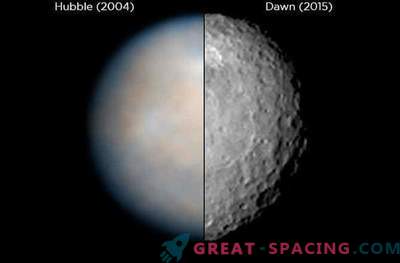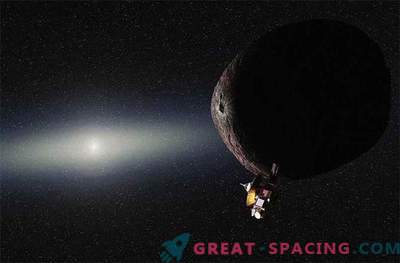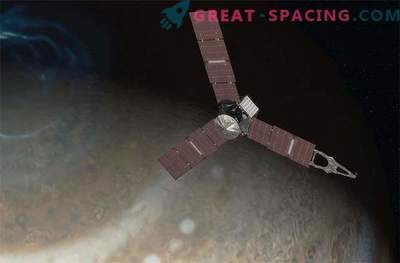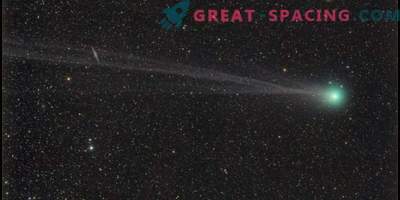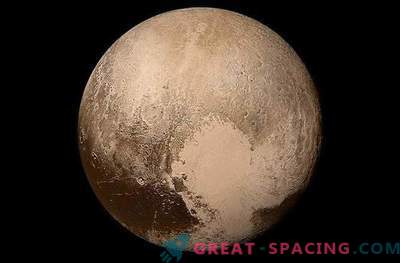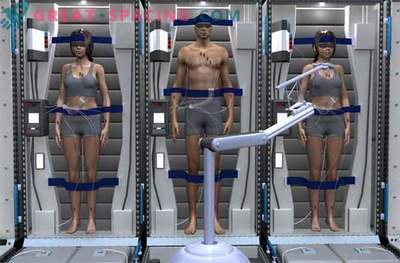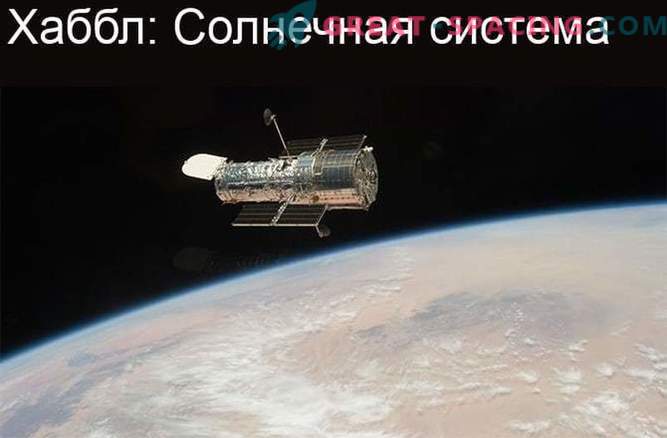
No matter how excited we are by the next generation of telescopes and those amazing landscapes of distant space that they transmit, let's take a look at our house - the Solar System. Here is a small selection of our favorite planets, asteroids, comets and satellites studied by Hubble in recent years.
Mars
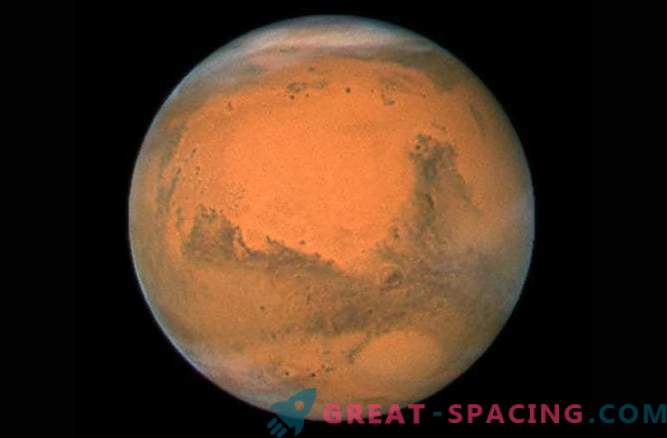
The Red Planet is Hubble’s beloved planet, and depending on its location in its orbit, the space telescope will periodically check it. Our neighbor in the Solar System is clearly visible to Hubble, who is seeing atmospheric changes, such as global dust storms.
Vesta
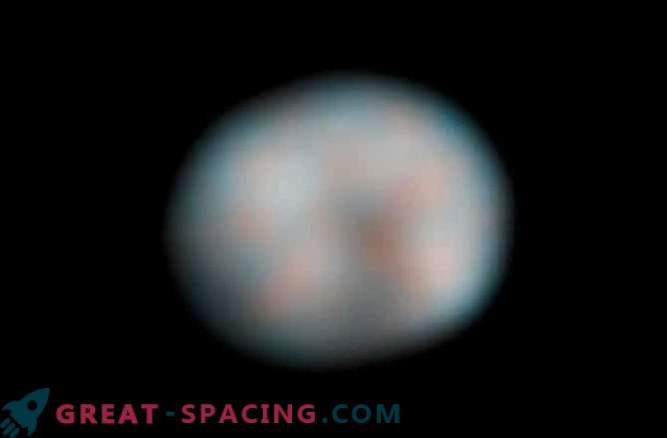
Deep inside the Asteroid Belt, which occupies the space between the orbits of Mars and Jupiter, hides a massive asteroid, and long before the NASA Dawn apparatus began to rotate in orbit Vesta, Hubble turned out to be on hand to bring this little world closer.
Asteroid breakup
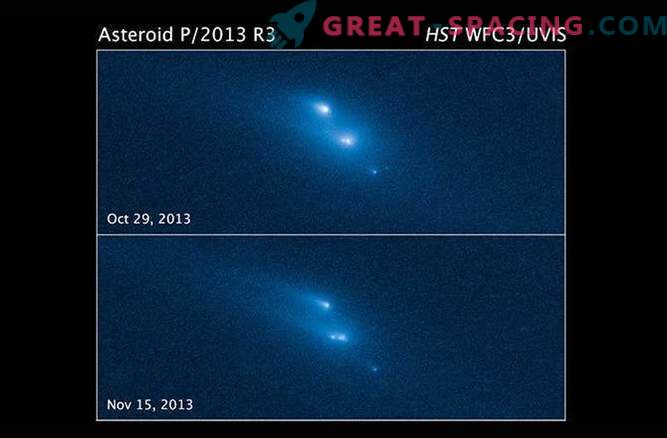
It is quite rare for Hubble to capture asteroids that literally fall apart. In this series of observations (since the end of 2013), the asteroid does not fall apart due to an impact, but as a result of exposure to sunlight, which causes rocky objects to rotate and tear themselves into pieces.
Comet or asteroid?
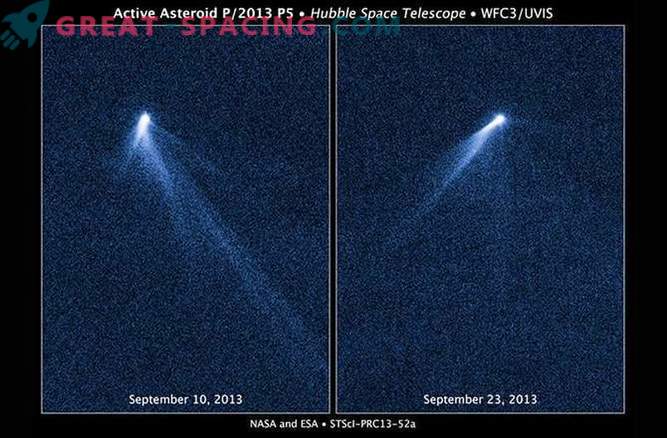
Hubble equalized the differences in comet and asteroid. The object shown here has attributes of both — it is called the “active asteroid,” which creates a tail like a comet. As Spock would say: “Enchanting.”
Comets
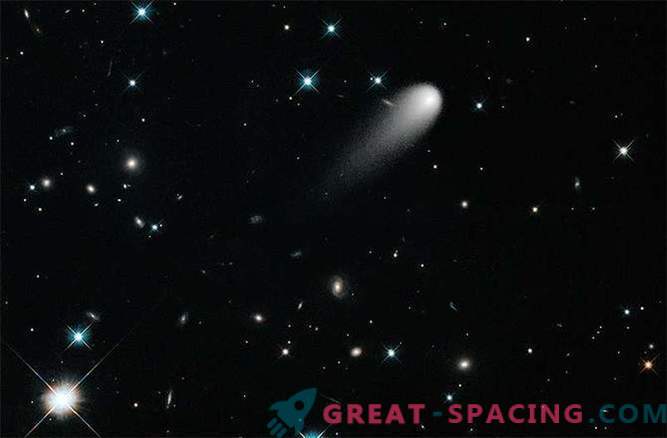
Hubble is also an experienced comet hunter and has proven his ability to track some of the greatest cometary phenomena of our time. One of these recent events was a terrific collision inside the solar system of the comet ISON, which attracted international attention as a potentially bright comet that could darken the Moon. Unfortunately, the ice tramp could not reach his potential, and eventually fry the sun, but at least Hubble captured his portrait before it completely evaporated.
Offensive!
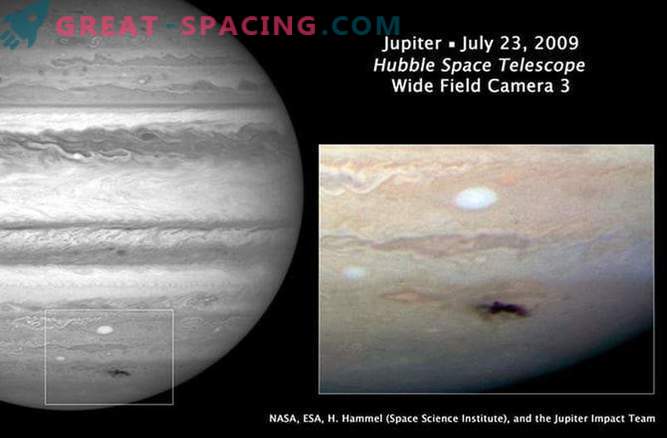
You may remember the dramatic destruction of Comet Shoemaker-Levy 9 in 1994, which ended with a major planetary impact in the atmosphere of Jupiter, but since then Hubble has noticed several more blows Jupiter. Following the observations of amateur astronomers for Jupiter’s strange damage, Hubble in 2009 saw signs of shocks that are strikingly similar to the effects of Shoemaker-Levy 9. These Hubble observations helped scientists understand how common the planetary collisions in our Solar System are.
Atmosphere of Jupiter
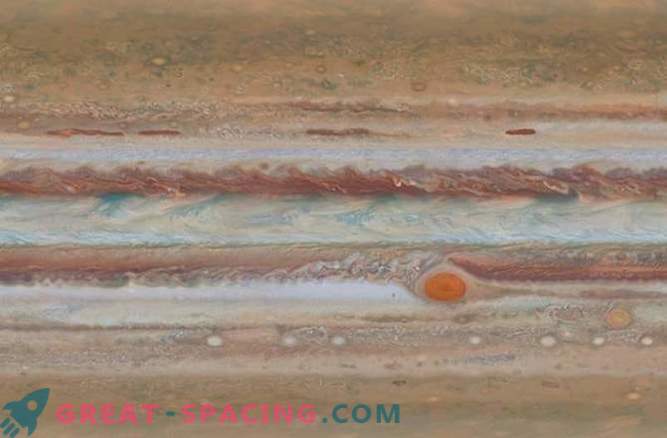
During the long campaign last year, Hubble took a few high-resolution shots of Jupiter, the largest planet in the Solar System. In the striking upper atmosphere of the gas giant, previously unnoticed waves were detected. Also, astronomers measured the size of Jupiter’s shrinking “Great Red Spot”.
The Dawn of Saturn
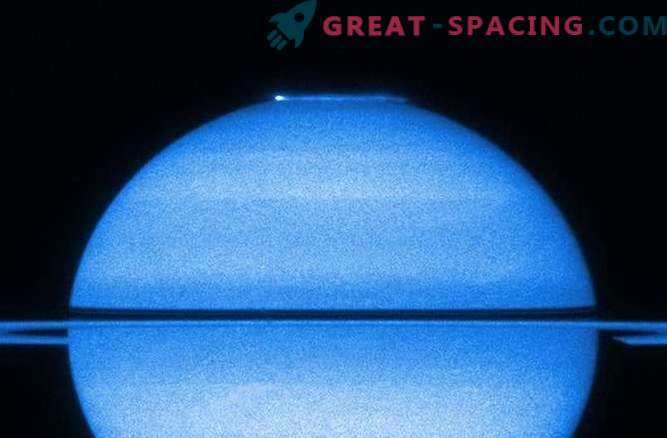
In 2009, the annular gas giant Saturn caught up with Earth, and Hubble took the opportunity not only to observe the edges of the rings, but also to explore the aurora of the north and south magnetic poles. It was an incredible scientific success, to study the activity of the solar wind at both poles at the same time, and it also allowed us to take some beautiful pictures.
Dawn of Uranus
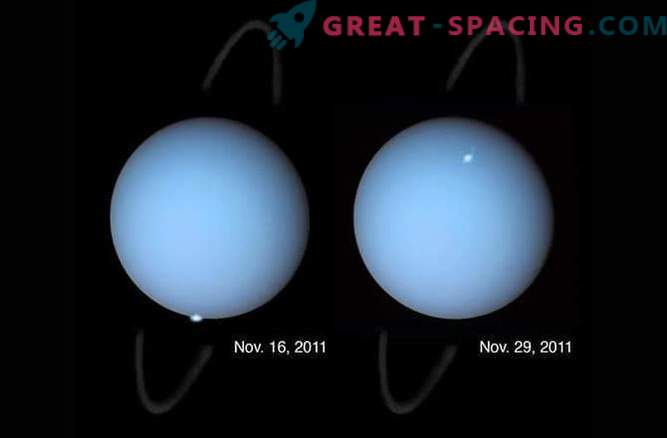
If a planet has a magnetic field, and if a cosmic wind passes through it, there is the possibility of a shine. It happens on Earth, and, as proved by Hubble, it happens on other planets in the Solar System. And although the focus is on the auroras of Saturn and Jupiter, the observations of 2011 showed graceful auroras in the upper layers of Uranus, the strangely inclined ice giant of the Solar System.
Neptune’s New Satellite

From its privileged orbital eaves, Hubble can detect even tiny satellites orbiting the distant planets of the Solar System. It shows the observation of the open satellite of Neptune S / 2004 N 1, which was found by astronomers in archival photographs of a giant ice planet made by Hubble.
Pluto
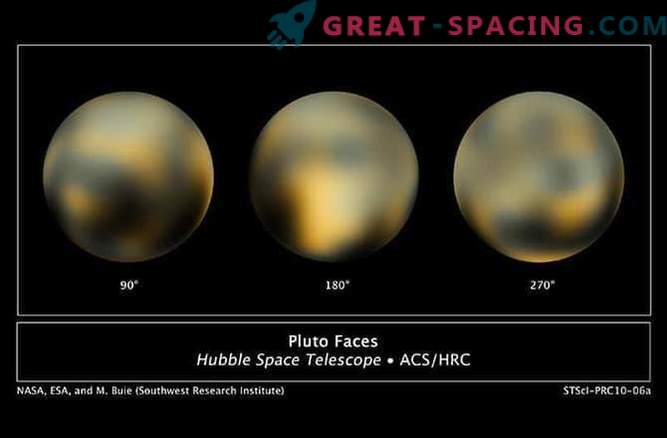
Although the image was motley and blurred, before the NASA New Horizons mission, flying near Pluto on June 14, 2015, it was the best shot of Pluto, taken through Hubble lenses. However, the space telescope was able to distinguish between different tinted landscapes and even the movement of the atmosphere from a distance.
Pluto satellites
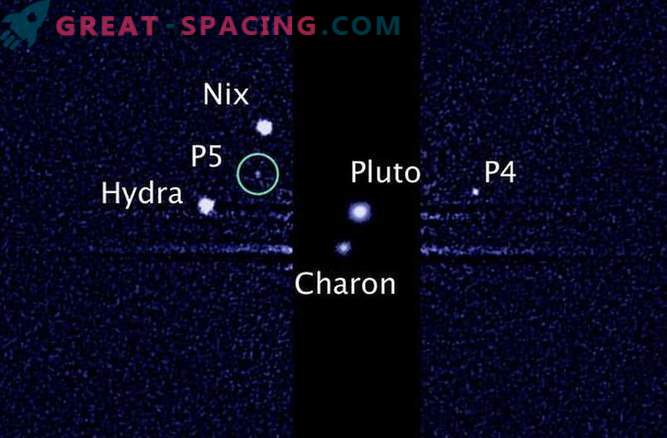
During the ten-year journey to the outer part of the Solar System, the NASA New Horizons mission received help from Hubble in many ways. Initially, Hubble was used to search for previously unknown satellites orbiting a dwarf planet. Not only because it’s cool to find objects in the outer part of the Solar System, this study, ultimately, should have helped the New Horizons scientists in their work if Pluto turns out to be a dangerous place filled with potentially dangerous space debris. During the campaign, Hubble discovered satellites “P4” and “P5”, later named (after public voting and discussion) Kerber and Styx.
Kuiper Belt Objects
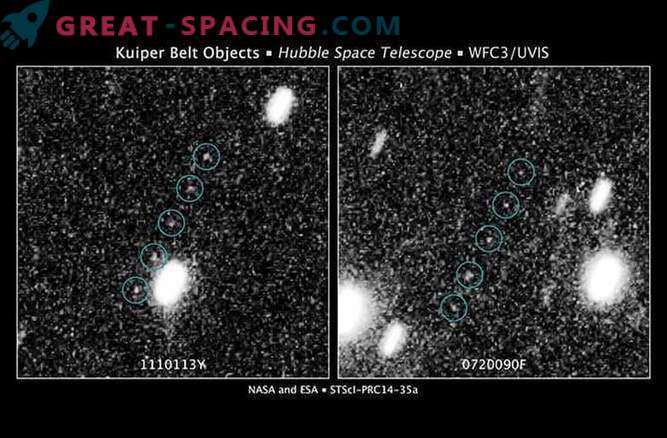
When NASA’s New Horizons mission flew on July 14, 2015 past Pluto, it was not intended as a one-off mission. Mission scientists planned to visit another object in the outer part of the Solar System, deep inside the Kuiper Belt, around 2019. Hubble played a huge role in this expansion of the mission, helping astronomers explore the “depths” Kuiper Belts to find the perfect candidate - the mysterious body called 2014 MU69 (PT1). This study showed two Kuiper Belt candidates, reviewed in 2014, before meeting the probe with Pluto.
